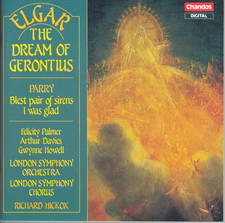The Full Works Concert - Monday 12 May 2014
An all-French Full Works Concert to mark the birthdays of Massenet and Fauré.
Debussy's Prelude a l’apres midi d’un faune, first performed in 1894, was planned originally as the first part of a trilogy. It was originally to have been followed by an Interlude and a Paraphrase finale. in the end, for reasons best known to himself, Debussy decided to confine all his thoughts on a poem by Stéphane Mallarmé to just one single movement. The composer was 32 years old when he wrote it and it was 18 years later that it was adapted into a ballet, when Nijinsky danced to it in Diaghilev’s Ballets Russes production in Paris. This piece is a big turning point in music, perhaps allowing us to hear the traditional system of keys and tonalities being stretched to their limit for the first time.
L'Arlesienne Suite No.1 contains some of the incidental music composed by Bizet in 1872 to a play by Alphonse Daudet. The composer himself played the harmonium backstage at the premiere performance. He wrote several folk-like themes but also incorporated three existing tunes from an existing folk-music collection. The play was not successful, closing after only 21 performances, but Bizet's music has survived and flourished and is now most often heard in the form of two suites for orchestra.
In his late 40s, the French composer Gabriel Fauré, pictured, fell in love with the singer Emma Bardac. The affair inspired a burst of creativity and a new originality in the music of the already married composer. He wrote the Dolly Suite for piano duet between 1894 and 1897 and dedicated it to Bardac's daughter Hélène, known as "Dolly". Some people suspected that Fauré was Dolly's father. We hear it tonight in its full orchestral arrangement.
Erik Satie's 3 Gymnopedies were composed in 1888 and named after an ancient Greek rite. There’s a wonderful sense of musical distillation: no note is extraneous; nothing is rushed; and it’s almost impossible to hear them and not feel relaxed afterwards.
We move back in time next to Baroque era France and the music of Jean-Philippe Rameau. The lively and sumptuous Sixieme Concert for string orchestra and continuo is filled with dramatic flourishes.
French Romantic music is often distinctive for its particularly delicate qualities and nowhere is this more evident than in the 'Méditation' from Massenet's Thais. The indulgent violin solo, cushioned by dream-like harmonies from the harps and, later, a sweeping orchestra, perfectly embodies the sound of French music at the time.
Ravel’s Piano Concerto in G was always intended to be a frivolous work. In contrast to many of the concertos of his day, what Ravel was aiming to write was something light, fanciful and not inherently serious: ‘In the spirit’, as he said, ‘of Mozart and Saint-Saëns’. The light-hearted nature of the concerto is confirmed from the first sound we hear in the opening movement: a playful, percussive whip-crack. The work is jazz-tinged in the outer movements. In between, a slow movement of serene beauty confirms Ravel’s status as a master of melody. ‘That flowing phrase!’ he apparently commented. ‘How I worked over it bar by bar! It nearly killed me!’
Claude Debussy: Prelude a l'apres-midi d'un faune
Flute: Emmanuel Pahud
Claudio Abbado conducts the Berlin Philharmonic Orchestra
Georges Bizet: L'Arlesienne Suite No.1
Andrew Davis conducts the Toronto Symphony Orchestra
Gabriel Faure: Dolly Suite Opus 56
John Barbirolli conducts the Orchestre de Paris
Erik Satie: 3 Gymnopedies
Piano: John Lenehan
Jean-Philippe Rameau: Sixieme Concert
Christophe Rousset conducts the Les Talens Lyriques
Jules Massenet: Thais – meditation
Violin: Anne-Sophie Mutter
James Levine conducts the Vienna Philharmonic Orchestra
Maurice Ravel: Piano Concerto in G major
Piano: Pierre-Laurent Aimard
Pierre Boulez conducts the Cleveland Orchestra













